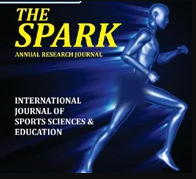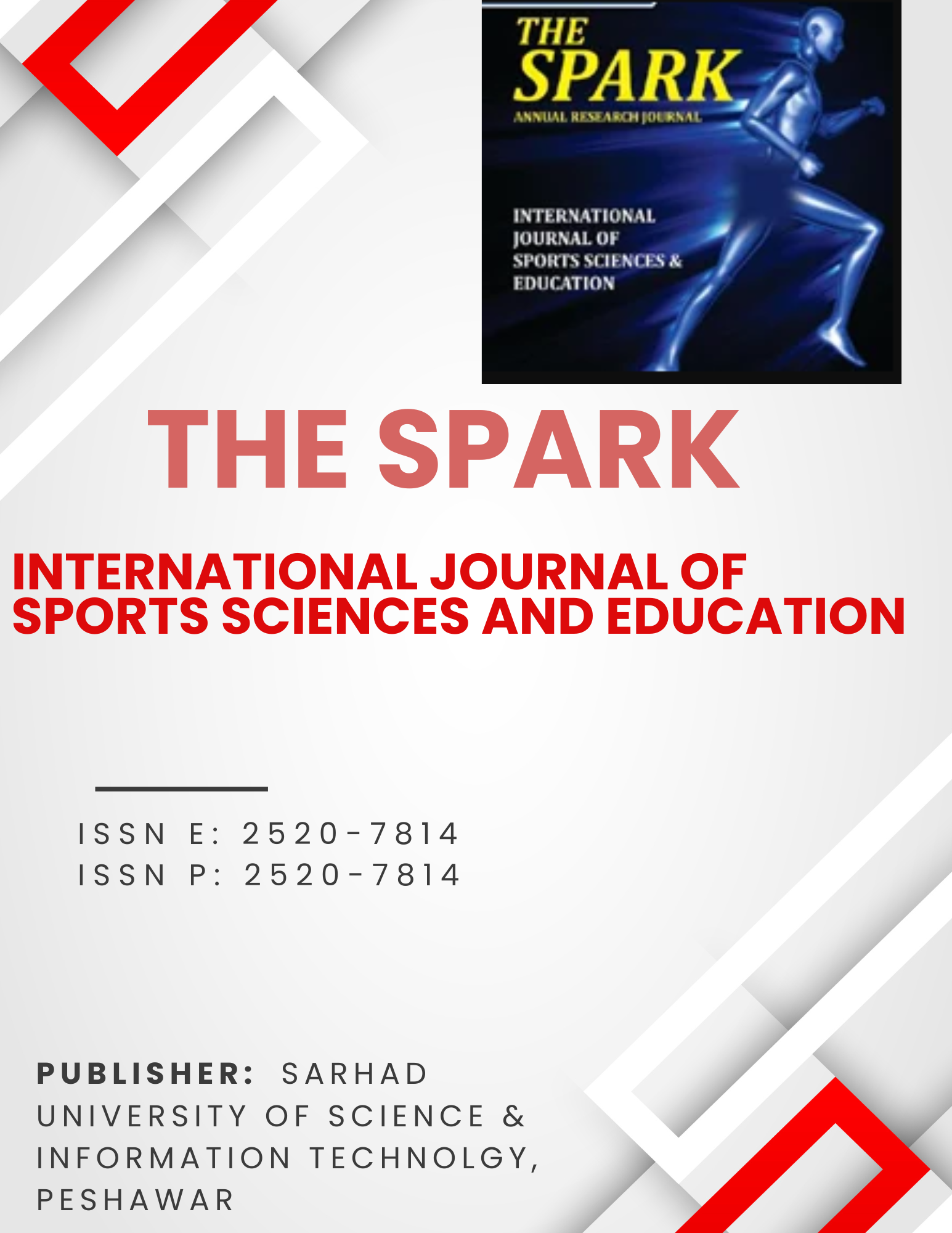RELATIONSHIP OF LEARNING ENVIRONMENT AND ACADEMIC ACHIEVEMENT; A CASE STUDY OF HEALTH AND PHYSICAL EDUCATION STUDENTS
Keywords:
Learning environment, academic achievement, health and physical education, secondary schools’ students.Abstract
Purpose: This study explored the relationship between learning ambiance and academic attainment of health and physical education students at secondary school level. Methods: A survey of 800 (males=400; females=400) randomly selected from 40 secondary schools was conducted to collect the required information. However, after elimination of some spoilt questionnaires; the researchers finally used 768 valid questionnaires for data analysis. Results: The analyzed information stated that the current student teaching and learning facilities in the chosen region were discovered not up to the mark, so these facilities have an adverse effect on learners, academics. Therefore, a major portion from both the groups of gender fell in the category of low achievement. Conclusion: The findings of the study also revealed  girls reporting lesser academic achievement might be due to societal norms and domestic pressure. Recommendations: The findings of the study may help the teachers to work in collaboration with their respective head of the institution to establish an arsenal of strategies that could inoculate students against low and average academic achievements by providing a conducive to learning environmentReferences
Adey, P., Shayer, M., & Shayer, M. I. C. H. A. E. L. (2006). Really raising standards: Cognitive intervention and academic achievement. Routledge.
Armour, K. (2013). Sport pedagogy: An introduction for teaching and coaching. Routledge.
Avalos, B. (2011). Teacher professional development in teaching and teacher education over ten years. Teaching and teacher education, 27(1), 10-20.
Bar-On, R. (2006). The Bar-On model of emotional-social intelligence (ESI). Psicothema, 18, 13-25.
Bok, D. (2009). Our Underachieving Colleges: A Candid Look at How Much Students Learn and Why They Should Be Learning More-New Edition (Vol. 2). Princeton University Press.
Cole, J. M., & Hilliard, V. R. (2006). The effects of web-based reading curriculum on children's reading performance and motivation. Journal of Educational Computing Research, 34(4), 353-380.
Durlak, J. A., Weissberg, R. P., Dymnicki, A. B., Taylor, R. D., & Schellinger, K. B. (2011). The impact of enhancing students’ social and emotional learning: A metaâ€analysis of schoolâ€based universal interventions. Child development, 82(1), 405-432.
Dumas, D. (2009). Perceptions des comportements interpersonnels d’enseignants et d’enseignantes d’éducation physique et à la santé par des élèves du secondaire. Mémoire de maîtrise non publié. Faculté d’éducation physique et sportive. Sherbrooke : Université de Sherbrooke.
Eime, R. M., Young, J. A., Harvey, J. T., Charity, M. J., & Payne, W. R. (2013). A systematic review of the psychological and social benefits of participation in sport for children and adolescents: informing development of a conceptual model of health through sport. International journal of behavioral nutrition and physical activity, 10(1), 98.
Evans, C. (2008). The effectiveness of m-learning in the form of podcast revision lectures in higher education. Computers & education, 50(2), 491-498.
Fakeye, D. O. (2010). Students’ personal variables as correlates of academic achievement in English as a second language in Nigeria. Journal of Social Sciences, 22(3), 205-211.
Hills, A. P., Dengel, D. R., & Lubans, D. R. (2015). Supporting public health priorities: recommendations for physical education and physical activity promotion in schools. Progress in cardiovascular diseases, 57(4), 368-374.
James, A., & Prout, A. (Eds.). (2015). Constructing and reconstructing childhood: Contemporary issues in the sociological study of childhood. Routledge.
Jethro, O. O., Grace, A. M., & Thomas, A. K. (2012). E-learning and its effects on teaching and learning in a global age. International Journal of Academic Research in Business and Social Sciences, 2(1), 203.
Judge, T. A., Jackson, C. L., Shaw, J. C., Scott, B. A., & Rich, B. L. (2007). Self-efficacy and work-related performance: The integral role of individual differences. Journal of applied psychology, 92(1), 107.
Lehtinen, E., Hannula-Sormunen, M., McMullen, J., & Gruber, H. (2017). Cultivating mathematical skills: From drill-and-practice to deliberate practice. ZDM, 49(4), 625-636.
Lee, Y. H. (2019). Emotional labor, teacher burnout, and turnover intention in high-school physical education teaching. European Physical Education Review, 25(1), 236-253.
McCombs, B. L., & Vakili, D. (2005). A learner-centered framework for e-learning. Teachers college record, 107(8), 1582.
McConkey, R., Dowling, S., Hassan, D., & Menke, S. (2013). Promoting social inclusion through unified sports for youth with intellectual disabilities: a fiveâ€nation study. Journal of intellectual disability research, 57(10), 923-935.
Nicol, D. J., & Macfarlaneâ€Dick, D. (2006). Formative assessment and selfâ€regulated learning: A model and seven principles of good feedback practice. Studies in higher education, 31(2), 199-218.
Nightingale, P., & O'Neil, M. (Eds.). (2012). Achieving quality learning in higher education. Routledge.
Nonis, S. A., Philhours, M., Syamil, A., & Hudson, G. I. (2005). The impact of non-intellectual variables on the academic success of business students. Marketing Education Review, 15(3), 51-63.
Rouse, K. E. (2013). Gamification in science education: The relationship of educational games to motivation and achievement.
Stepp-Greany, J. (2002). Student perceptions on language learning in a technological environment: Implications for the new millennium. Language Learning & Technology, 6(1), 165-180.
Sun, P. C., Tsai, R. J., Finger, G., Chen, Y. Y., & Yeh, D. (2008). What drives a successful e-Learning? An empirical investigation of the critical factors influencing learner satisfaction. Computers & education, 50(4), 1183-1202.
Downloads
How to Cite
Issue
Section
License
Submission of an original manuscript to the Journal will be taken to mean that it represents original work not previously published, that it is not being considered elsewhere for publication. And if accepted for publication, it will be published in print and online and it will not be published elsewhere.
The journal main policy reflects in its stance that the publication of scholarly research is exclusively meant to disseminate knowledge and not-for-purposes.








 Name of Journal:
Name of Journal: 